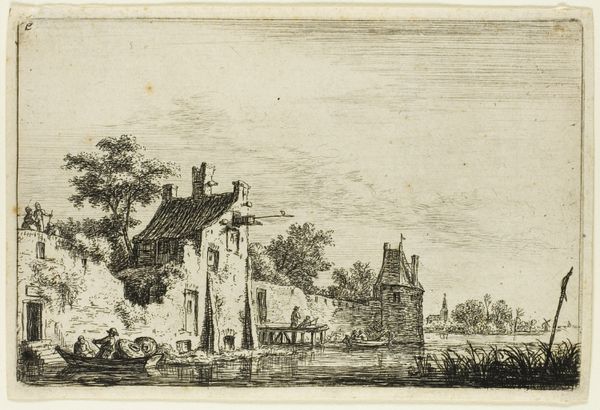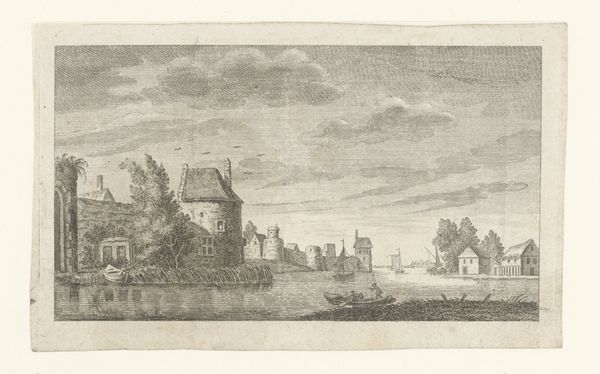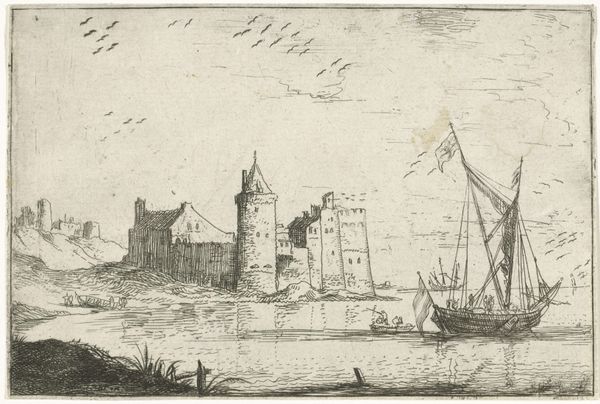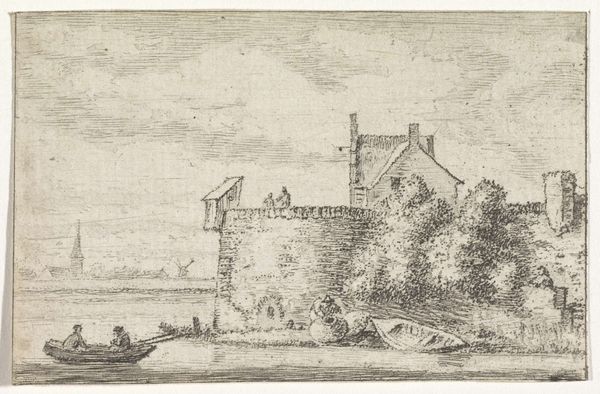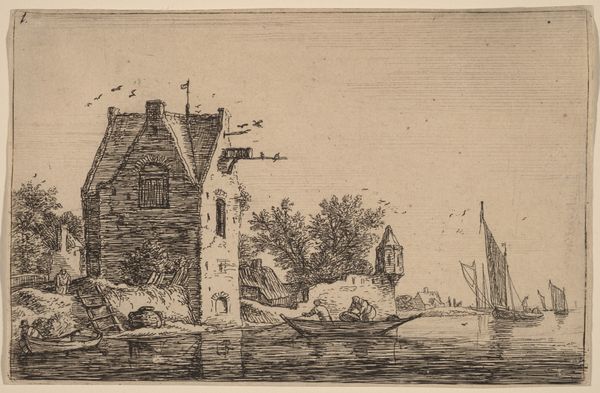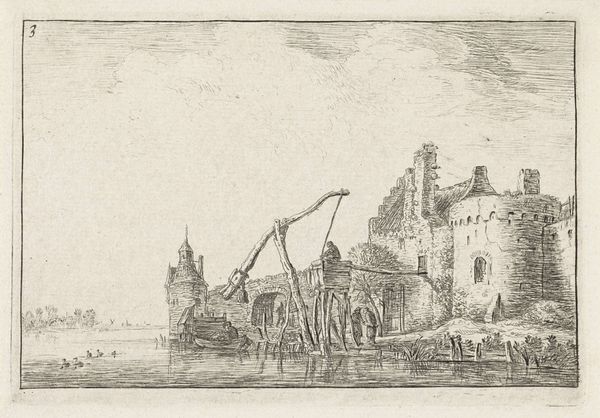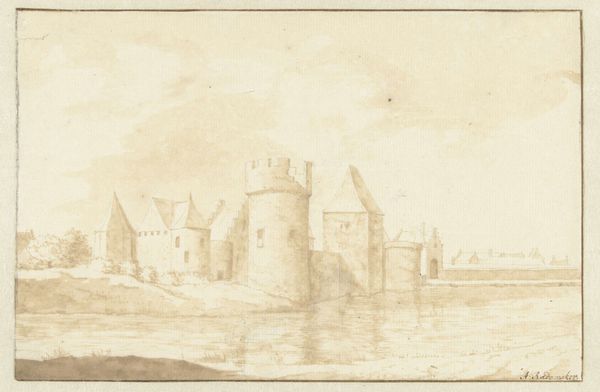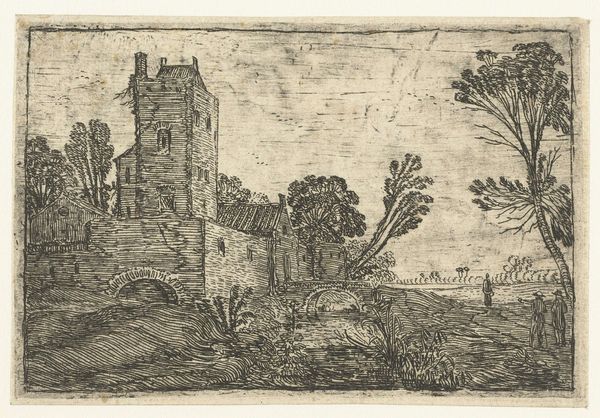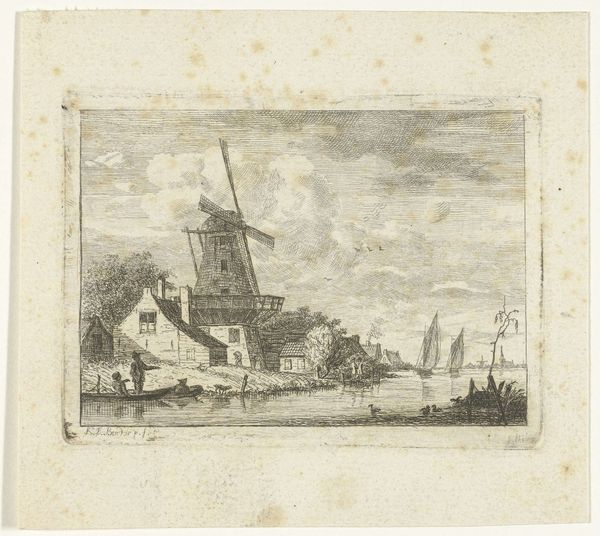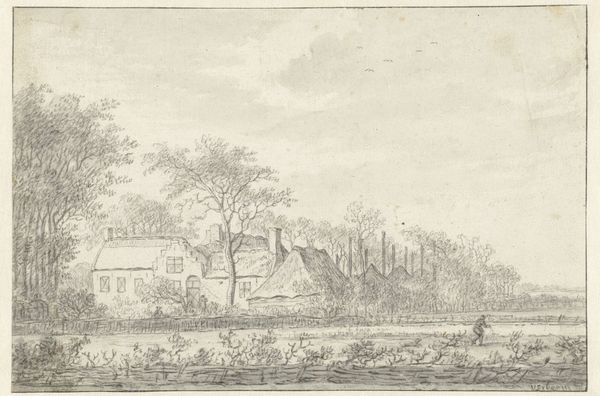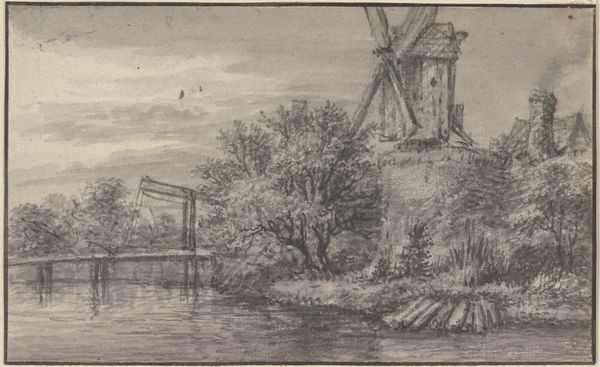
Dimensions: height 54 mm, width 85 mm
Copyright: Rijks Museum: Open Domain
Curator: At the Rijksmuseum, we have "Anglers by a fortified house on a river," a print by Hendrik Spilman created sometime between 1742 and 1784, utilizing etching and ink. What strikes you about it? Editor: Well, immediately I notice the texture achieved. The density of etched lines suggests a real labor in creating depth and a sense of place from simple materials. It's not grand, but deeply felt. Curator: Spilman captures something enduring, doesn’t he? Consider how angling, reduced to these humble figures, embodies patience, resourcefulness, but also something deeper, connecting man to the rhythm and provision of nature. The fortified house acts as counterpoint, implying social structure. Editor: Precisely! I see a statement about the economic conditions of rural life, or perhaps even a commentary on land ownership and the resources available to common people. Etching itself, being relatively accessible, is important. How readily were such images circulated and consumed? Curator: These landscapes fed a burgeoning desire for picturesque views among the rising middle class. It speaks of a world increasingly shaped by trade, and offers this romantic reflection, both literally and figuratively etched into popular consciousness. Notice the implied symmetry? Anglers mirror the church far left; each are anchors, but what values do they transmit? Editor: That's interesting. To consider, then, is also how these materials and printmaking practices are intertwined with that expansion of trade, shaping ideas about what constitutes beauty, worth representing, and whose stories get told through accessible art. Curator: Absolutely. Looking at Spilman’s rendering allows us to see the relationship of the personal to the environmental, filtered by symbolic social space; nature’s promise remains undisturbed in spite of cultural constructs. Editor: A thoughtful convergence, a mirror to contemplate both society and craft within Spilman's creation. Curator: Thank you for that observation.
Comments
No comments
Be the first to comment and join the conversation on the ultimate creative platform.
